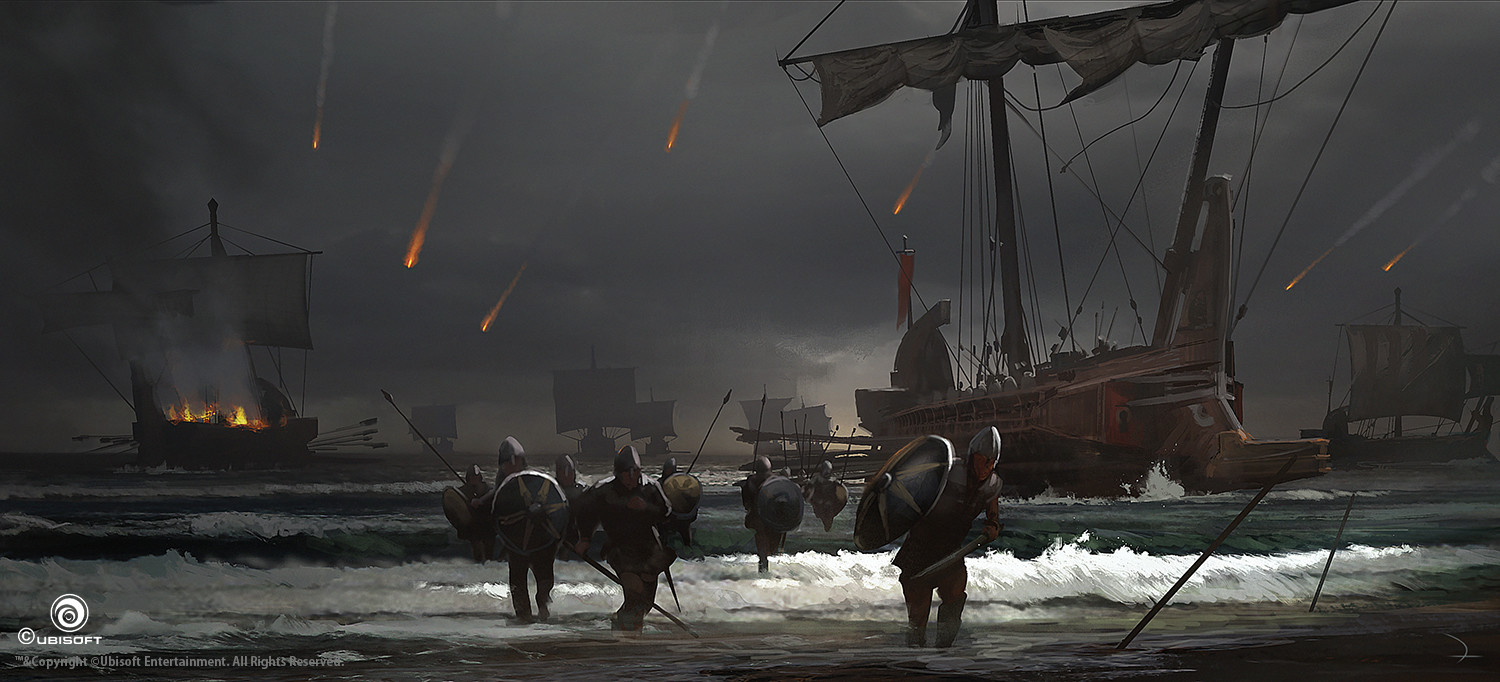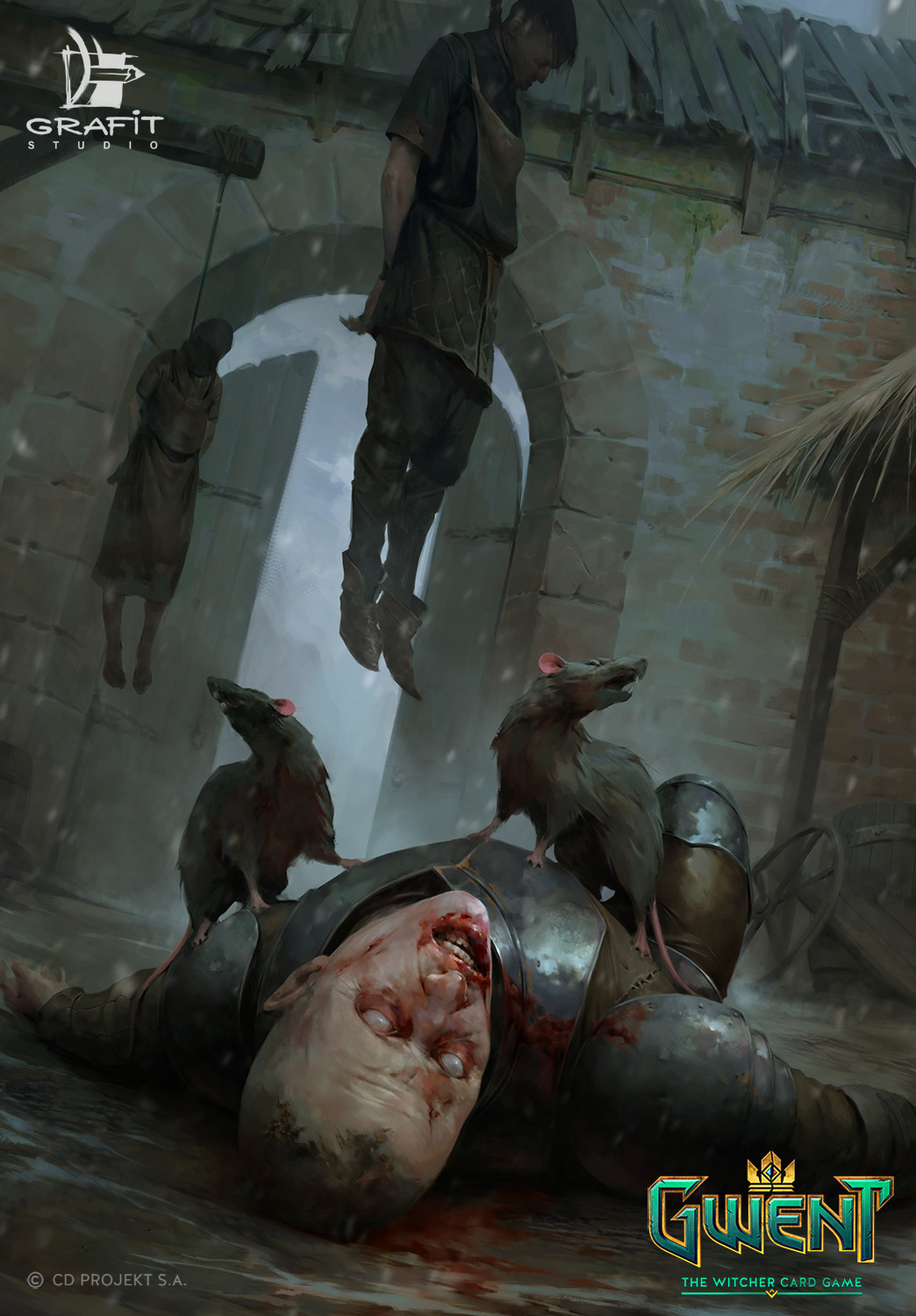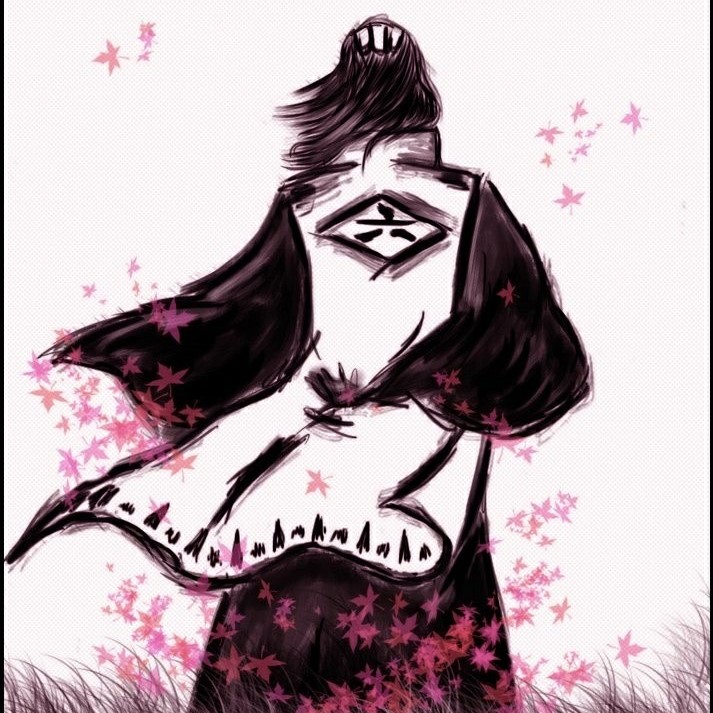Ethnarch Rebellion
Congratulations, Anna. You have the war you wanted. Pray to the Gods that you are luckier than the hundred fools sent in before you.
Rebellion is nothing new to the Eternal Empire. Uprisings large and small have shaped many an aspect of the nation's five-millennia long history. But the War of the Ethnarchs stands out. For it was here that the empire's might was turned against it. It was here that a handful of men were to embarrass a global power.
In response, the empire did nothing. The rebellion had been a major embarrassment for major figures at court and had kicked off a period of severe infighting. It would be over two years until the empire could turn its attention toward the rebellion. But when it struck back, it did so with force.
Five units of the Tagmata led by the seasoned general Geonos Doukas began operations in Febris of 3292 DA. Fighting was bloody, but the increasingly divided Ethnarch coalition could not stop the advance of the Tagmata. Within a year, Geonos had annihilated their forces and declared Ikona Province pacified.
The Ethnic Army
A major problem facing the empire from the 26th century on was a lack of manpower. Brought on by catastrophic losses during the Dark Age and amplified by a general unwillingness to serve, the problem had grown into a major crisis by 3000 DA. The empire turned abroad in search of manpower. Foreigners were hired to form their own companies under the banner of the Imperial Army. Led by Ethnarchs, they were subservient only to Imperial High Command but could otherwise act on their own. The empire provided funding, equipment and officers to coordinate the ethnic regiments. At relatively low cost to themselves, the Rhomeians more than doubled the size of their army within a decade. Things changed when the empire, under control of the Doukid family since 3270 DA, grew increasingly hostile towards foreigners. Ignoring growing discontent, the Doukids doubled down. Escalation was certain when the Ethnarchs operating in the Ikona Province were denied regular payment after nearly a decade of service.The Great Rebellion (3289-3321 DA)
Full-scale War (3289-3292 DA)
Starting on the 22nd of Iunis 3289 DA, the rebellion swept Rhomeian forces out of Ikona province within a month. It is unknown wherever it was a spontaneous uprising or had been planned long in advance, but its effectiveness could not be denied. The Eternal Empire now faced full-scale war in its colony:Rhomeian Empire
led by Strategos Geonos Doukas
~ 50.000 Soldiers
~ 45.000 Soldiers
Restore Imperial Control.
Heavy Casualties.
led by Strategos Geonos Doukas
~ 50.000 Soldiers
~ 45.000 Soldiers
Restore Imperial Control.
Heavy Casualties.
Factions
Leaders
Total Strength
Soldiers Committed
Goal
Casualties
Leaders
Total Strength
Soldiers Committed
Goal
Casualties
Ethnarchs of Ikonia
led by Ethnarch Danush Kharim
~ 32.000 Soldiers
~ 32.000 Soldiers
Exact Goals Unknown.
Forces Annihilated.
led by Ethnarch Danush Kharim
~ 32.000 Soldiers
~ 32.000 Soldiers
Exact Goals Unknown.
Forces Annihilated.
Doukas had drowned his enemy in an ocean of blood. But he forgot one important lesson: rats can swim.
War from the Gutter (3294-3317 DA)
But Geonos had not been as thorough in his purge as he thought. Small bands of soldiers, in total probably less than 2.000 in number, had managed to evade imperial forces in the rugged hills that dominated western Ikona. Although from different armies, these men began to gather under the command of Savin Tey, the only Ethnarch who had not been killed or captured. Known for his cunning and stubbornness, Tey was perhaps the worst possible opponent for the Empire to face. And he had no intention to surrender. Operations started slowly, with isolated outposts being raided and patrols disappearing. It was here that one key advantage of the rebels began to show itself. After over a decade of war in Ikona, they knew the terrain well. Tey's forces easily avoided the main areas of Rhomeian control, slowly disrupting their supply network as they did so. Had the empire remained focused on Ikona, it might have caught the growing threat early on. But once again, it was caught off guard as Tey launched his attack in Octem of 3297, effectively breaking the imperial hold over the province as he did so. Imperial forces entered Ikona again not even a month later but found a very different enemy than five years earlier. Tey's forces, veterans with decades of combat experience and fully equipped from captured Rhomeian supply hubs, proved frighteningly effective. Rather than face the vastly more numerous Rhomeians in open battle, Tey remained elusive. Small bands, between 10 and 100 men strong, struck at vulnerable targets, silencing outposts and disrupting supply lines, only to vanish into the countryside at the first sign of a major response. One such group, 120 strong and equipped with a battery of captured Rhomeian artillery, managed to shut down the harbour of Theia, the main imperial hub for troops and supplies entering Ikona Province, for over five years. Every time imperial forces massed to dislodge them, they would be attacked in the rear by Tey's bands, causing any serious attack to collapse before it could even begin. It was a war where every battle saw the rebels outnumbered ten to one. Yet the Imperial Army would run itself ragged trying to catch them. Every village cleared would simply fall back into rebel hands once the army had left. A local lord threatened into compliance would simply switch his allegiance again once the dust had settled. It did not help that the imperial government routinely removed officers for failure to catch the rebels in short order. By 3317 DA, the empire had made effectively no gains and seemed a spent force to many.War of Ashes (3317-3321 DA)
Things changed with the arrival of a new imperial commander: Anna Komneia. Barely 17 years old, the young noble had leveraged her family's influence against a weakened government and gained command of the Ikona War. Unlike her predecessors, which had been hamstrung by an overbearing and paranoid government, Anna had managed to gain what effectively amounted to carte blanche, basically making her the sole authority in the region. A fact she used to full effect. Rulers whose realms bordered Ikona Province were pressured into fortifying their borders, making it impossible for rebel forces to hide outside imperial reach. The province was effectively sealed off from the wider world by 3318 DA. What followed was nothing short of total war. With 30.000 men, Anna began to scour Ikona starting from the coast. Rather than try to drive rebels from villages and occupy useless territory, Anna's forces followed a policy of scorched earth, destroying every piece of useful infrastructure outside a few heavily fortified supply corridors. The secret police were employed liberally to gain information and mass torture became frighteningly common. Whenever a rebel cell could be found, Anna's forces would seal the area off before burning it to the ground. This tactic, now known as the "Burning Embrace", was as destructive as it was effective. Within three years, the rebel army was reduced to a dozen men. Led by Savin Tey himself, they would finally be hunted down in late 3321 DA. The war in Ikona had finally come to an end.The Fallout
Although counted as an imperial victory, the Ethnarch Rebellion had been nothing short of a disaster. Vast swaths of Ikona Province had been reduced to ruins, and the rebuilding effort has still not been completed. The waste of money and manpower had made it clear that radical change was needed. Treatment of the Ethnarchs and their regiments was overhauled, the Imperial Tagmata were reorganised, and colonial policies lightened so as to reduce animosity towards the empire. For some, the return of a victorious Anna Komneia at the head of a veteran and loyal army was a far more ominous consequence, however.She turned the land to ashes and declared it peace. Don't forget that fact when you consider the girl harmless.
Start Date
3289 DA
Ending Date
3321 DA
Conflict Result
Rhomeian Victory. Rebellious forces annihilated. Treaty of Cadia.
Location
What made the Ethnarch Rebellion so deadly was the fact that it pitted two equally matched armies against one another. Rarely could a rebellion stand up to the imperial army in terms of quality. But the Ethnarch Armies were different. These were veteran forces, well-versed in Rhomeian tactics and equipped with the same gear. The Tagmata were forced to fight an enemy that could negate every advantage they usually possessed.
Defeat in Detail
Much of the success of Geonos' campaign can be attributed to rebel disunity. The armies of the Ethnarchs hailed from a dozen different countries and had relied on Imperial officers for communication. With them gone and nothing to unite them beyond a hatred for the empire, the rebels quickly fell apart. Geonos could defeat them in detail, using his numerical superiority to utmost effect.

by Lewis Fisher
Not much is known about the exact goals of the rebel leaders. In part because imperial historians tend to be vague about the conflict. However, another factor is that there doesn't seem to have been a unified position. Other than resentment at imperial mistreatment, the Ethnarchs seem to have had no unifying policy. Of the eleven Ethnarchs that participated in the rebellion, only two are relatively well known:
- Danush Kharim:
Of Buyatine descent, Danush was one of the empire's premier cavalry commanders. The face of the rebellion, he seems to have tried to carve himself a kingdom within Ikona. He was killed in early 3292 DA during the Battle of Sewana.
- Savin Tey:
A former Vitrian noble, Savin Tey was by far the most tenacious of the rebellious Ethnarchs. The motivation for his decade-long war is unknown but seems to have been partially motivated by revenge against what he saw as a monstrous empire. Following his death in 3321, he became a local hero in Ikona Province.
Your mistake was to think of this as a war. When really it is a pest control operation.Deadman's Reign
Both rebellion and imperial failure find their origin in the reign of Emperor Heracleion XXV.. A combination of long life, at present Heracleion is 85 years old and has ruled for over 70 of those, and complete desinterest in the actual duty of a ruler has effectively turned the imperial court into a free-for-all. Known as the "Deadman's Reign", this period has seen constant shifts in power and policy that made a coherent response to the rebellion impossible.
The Cost of War
The Ethnarch Rebellion is one of a few conflicts that is universally seen as a colossal failure even by imperial propagandists. Thirty-three years, millions in wasted money and over 300.000 dead.

by Mila Pesic










This is a well written conflict, you portray it perfectly. Guerilla war, hit and run tactics, indirect engagement, prioritizing soft targets, it all checks out. This is the text book, and has been for most of human history, and you sell your man Tey well in that regard. Seems he was not just an officer and a veteran he was the most dangerous kind of both. A well learned and adaptable officer and veteran. Those are the most dangerous soldiers in the world. The ones that never stop learning and see the world as a classroom. However this conflict feels...not incomplete, but more like it is at a temporary armistice. The actions of Anna Komneia and her troops are the classic blunder. The Iron Fist always only strengthens the movement in the streets, because you inevitably breed resentment, because you inevitably sweep up innocents. And those innocent bystanders have families. Families whom will hold a grudge, and be even angrier because they are not lashing out over a grievance, but a moral injury. They witnessed actions that simply cannot be allowed to stand. So they will be more committed, more zealous, more willing to die, to slash and to burn. I would expect Ikona to ignite in rebellion again within perhaps 30-50 years after these events, but in an even harder, stickier fashion, and with more willingness to push the envelopes of things like lacking uniforms, posing as civilians, the works. Full blown insurgency. Perhaps more in a style like the IRA of more modern times, but this sort of behavior and that sort of response always inevitably bites back. It never ever works for long. Its literally the one rule in the manuals about such events. Never give them a security clampdown, never give them an elevated response, never use the iron fist. She broke all three rules. This peace will not last, I would imagine.